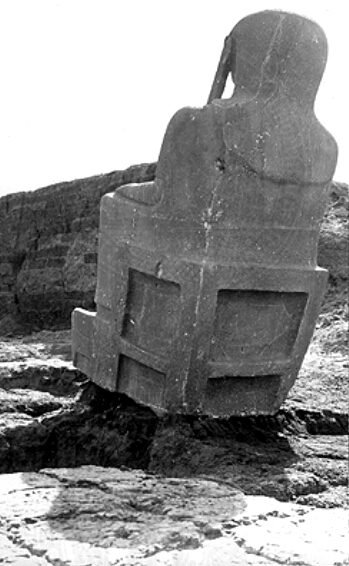Excavation at Tell Halaf

The “Enthroned Goddess”, near her site on Tell Halaf, northeastern Syria, 1912.
Courtesy of the Max Freiherr von Oppenheim-Stiftung
Max von Oppenheim was a German-Jewish diplomat, archaeologist, and museum director. Anti-Semitism in the Foreign Office prevented him from pursuing an official diplomatic career. Nevertheless, Oppenheim was active in foreign service. Around 1900, he was stationed in Cairo to monitor the machinations of the British and French in the Middle East. Oppenheim pursued the bold plan of instigating a “jihad.” For the benefit of Germany, the Muslims in the region were to rise up against their British and French colonial masters. Thanks to his language and local knowledge, Oppenheim was also involved in the “Baghdad Railway” project. He was asked to scout out a possible route through Mesopotamia. In the process, Oppenheim’s attention was drawn by locals to Tell Halaf, a burial mound located on what is now the Syrian-Turkish border. This mound contained remains of the palace of an Aramaic principality that was destroyed by the Assyrians in the 8th century BCE.